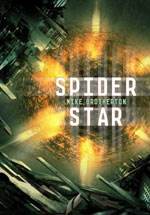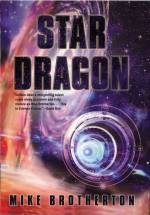Search
Astronomy Misconceptions in Literature
January 29th, 2012
Recently I highlighted an astronomical blunder by literary giant Ernest Hemingway in The Old Man and the Sea.
He is far from unique.
Samuel Taylor Coleridge, Charles Dickens, James Thurber, Edgar Allen Poe, and others of similar literary greatness, have all similarly blundered. A lot of the mistakes involve the moon:
“Till clomb above the eastern bar
The horned Moon, with one bright star
Within the nether tip”
— Rime of the Ancient Mariner by Samuel Taylor Coleridge
Basically he’s suggesting that a star may be seen between the two tips of the crescent moon, either because the stars are between us and the moon or because the space between the tips isn’t opaque in that phase. I don’t think so, Sam. Phil Plait remarked about the same problem in an episode of Legend of the Seeker.
Now, as fun as it might be to some to bash literary types for poor scientific literacy, I want to point this stuff out and highlight it as an educational opportunity.
I’m going to keep saying it until it happens, but a single werewolf-centric book series in the same ballpark as Harry Potter or Twilight (or just outside the ballpark) could do the world a huge favor and educate millions about basic astronomy. I’d think any traditional werewolf character would know all about how the moon worked and be obsessed about it. Obsessed fans would know, too.
There are a lot of misunderstandings of how the stars, Moon, planets, and Sun move and behave in the sky. Another example.
In Edgar Allen Poe’s A Descent into the Maelstrom, a captain notes the time on his watch, which he can see under the light of a full Moon “nearly overhead.” Six hours later it is noted to be setting in the west? Did I mention that this is on July 10 off the coast of Norway? (About 68 degrees north latitude.) That far north the Moon is never seen “nearly overhead.” It would barely be over the horizon. And any object “nearly overhead” that far north never sets. Also bad is the fact that you’ve got almost continuous daylight this close to the arctic circle, and the light of moon isn’t needed and probably wouldn’t be noted.
There’s a couple of errors, and I’ll point you at a bunch more.
I read a lot, and have a fairly strong background in the classics, but I needed reminding and just doing the collecting is time consuming. I want to point you at my source for this post: The Wayward Heavens in Literature by Louis Berman. This is a paper from 1970 where these issues are highlighted. I came across it trying to track down the Coleridge error, which I remembered correctly but thought was from T.S. Eliot. My apologies to Eliot. The paper is free to download, so please check it out. Regularly scheduled starlinks coming soon, including more Moon talk.
You can follow any responses to this entry through the RSS 2.0 feed. You can skip to the end and leave a response. Pinging is currently not allowed.

